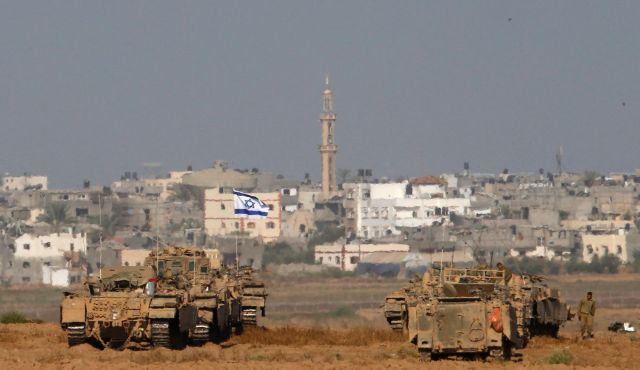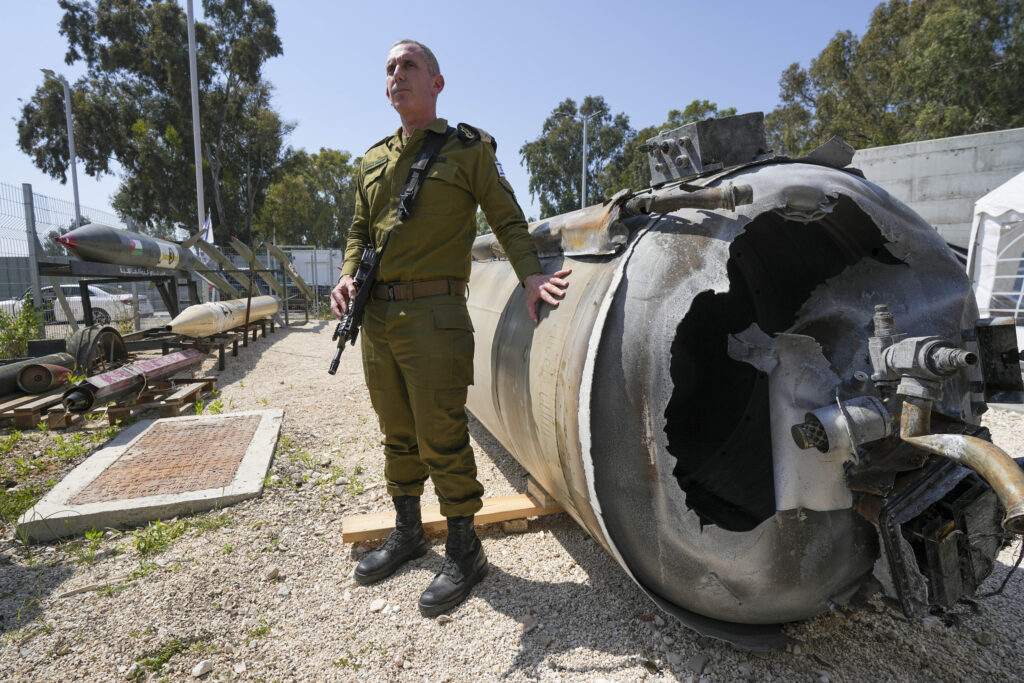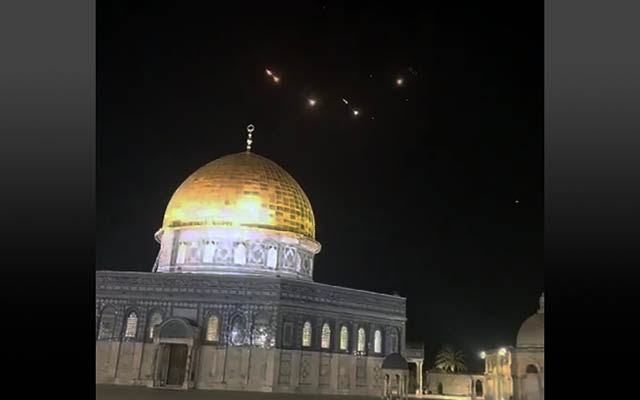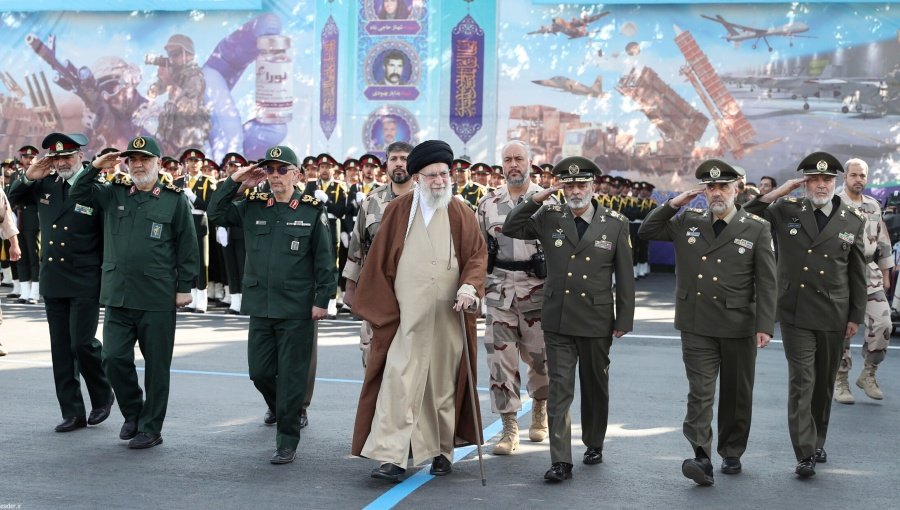UPDATES
What happened in Shujaiyeh?
Aug 4, 2014 | Or Avi Guy

Or Avi-Guy
Ruth Pollard’s report from Gaza on the Age (“Israel calls up 16,000 reservists after school hit,” 1 Aug.) was accompanied by a UN satellite image of Shujaiyeh, a neighbourhood in Gaza where fierce battles took place between Israeli military forces, who were searching for terror tunnel shafts, and Hamas terrorists. The image highlighted large areas of damaged and destroyed structures that seem to extend beyond the specific locations where tunnel shafts were found. However, reports in Israeli media about Shujaiyeh offer a better understanding of the situation on the ground and the intense fighting that occured in the area. They provide important insight and context about the scope of destruction, which is lacking when merely presenting a satellite image.

So what did happen in Shujaiyeh?
Shujaiyeh is the eastern-most neighbourhood of Gaza, and it stretches from just a couple of kilometres away from the border with Israel in the east, to the centre of Gaza City in the west. Israeli army intelligence warned that Hamas had been digging tunnels from the neighbourhood into Israel, with the intent of infiltrating Israel and carrying out terror attacks and abductions of Israelis from the towns along the border.
Forces from the Nahal, Paratrooper and Givati infantry brigades were operating in the area, locating the exit shafts close to the border, in order to eliminate the tunnel threat. Soldiers from the Golani Brigade joined them as the operation progressed, and its scope was expanded in order to expose tunnels dug from within the more densely populated neighbourhood. Tunnel shafts are at times found inside civilian homes in Gazan neighbourhoods close to the border.
Hamas’ strongest battalion (between 800-900 armed terrorists) was also located in Shujaiyeh, which has been described as Gaza’s tunnel network’s capital, and one of the organisation’s main strongholds. When IDF forces arrived in search of the tunnels and shafts on the night between 19-20 July, they were confronted by masses of Hamas fighters, as Ha’aretz reported:
“Dozens of its fighters opened fire at advancing Golani units, firing anti-tank missiles and detonating explosive charges. Golani took casualties in several incidents – seven fighters were killed by an anti-tank missile that hit a personnel carrier; three officers were killed in a house by rocket fire and three others were killed in other firefights.”
The Jerusalem Post had a similar account of the situation:
“…A senior army source from the Artillery Corps provided a chilling account on Sunday of the battles that raged there. On July 20, a Golani infantry force sent to search for tunnels came under a massive attack by Hamas’ Shejaia Battalion…The Golani Brigade in Shejaia sustained heavy casualties, the source recalled, after Hamas intelligence units mapped out its location. Operatives sent the information to waiting terrorists in tunnels. In a coordinated fashion, the gunmen emerged from ‘the metro under Shejaia,’ the source said, referring to the tunnels, and launched a massive wave of antitank, mortar, sniper and automatic gunfire from buildings surrounding the Golani force.
‘I saw that enemy cells had come to within 40 meters of our forces,’ the source added.”
Thirteen soldiers from the Golani Brigade were killed, and the Druze Brigade commander Rassan Aliyan was injured in four different battles that night, and Hamas’ fire lasted for hours. The force had great difficulty in evacuating the fallen and wounded, and the IDF commanders decided to open artillery fire and launch airstrikes targeting the Hamas terrorists operating against its forces in Shujaiyeh, while the troops took cover in armoured personnel carriers (APC) only 100 metres away.
“The IDF soldiers ‘were taking fire from all sides and they couldn’t neutralize the threat with all the firepower we gave them,’ said [an IDF] officer.”
The officer said that the decision to use artillery was not easy. He then added:
“Working with the knowledge of the enemy’s location, we put all the Golani soldiers in the Namers [the army’s best APCs] and we fired at our forces. We gave them half an hour to get into the vehicles and we laid down fire, after which there was no more shooting from there, not even light weapons.”
The artillery officer’s account on the Jerusalem Post sheds even more light on the way in which the tragic incident unfolded:
“At this stage, the Artillery Corps mapped out the location of enemy forces, in Gazan civilian residential buildings – areas where the IDF had previously told civilians to evacuate.
The Artillery Corps Support Unit watched the battle with alarm, and took drastic action, the source said.
‘Otherwise, I knew we would be getting 600 body bags back.’
It instructed all of the Golani soldiers to enter their namer (“leopard”) armored personnel carrier, and launched a wave of shelling, some of which fell on the namers, which are built to withstand such strikes. Three artillery battalions rained fire on Shejaia, in a bid to rescue the Golani soldiers. As this occurred, the source said, Hamas continued to blast the soldiers with mortars from all around the neighbourhood.
‘We heard them say over the radio: Fire is coming down on us.’ After 20 minutes of shelling, silence ensued…
Ten buildings lay in ruins.
‘I can say that we did everything we could to warn the civilian population before the war began.’
‘My heart aches for the noncombatants who were killed. This is a war in every way, not an operation. I visited our forces in Shejaia, and saw what I did with my own eyes,’ the source said. ‘And what we did there was nothing less than close support for the [infantry] corps.'”
Even while operating in an extremely hostile terrorist stronghold such as Shujaiyeh, the Israeli forces tried to minimise as much as possible the risk for civilians. According to Israel Hayom, the IDF warned local residents in advance to evacuate:
“Until two weeks ago, there had been almost 100,000 people living in Shujaiyya. According to the U.N. Relief and Works Agency, more than half of that left the area after the IDF dropped leaflets and played recorded messages telling them to leave. Many sought refuge in UNRWA buildings turned shelters.”
Ha’aretz reports support this account as well:
“The Hamas talks of a massacre but… this does not appear to be the case. According to preliminary information from the battlefield the intensity of fire increased only after the force had sustained many casualties…
Furthermore, part of the operation was postponed for twenty-four hours, since too many residents had ignored the IDF’s requests to evacuate. Very few armies operate this way when fighting an armed guerilla group in dense urban areas. “
In other words, the heavily damaged area of the Shujaiyeh that appears in the Age map was the scene of the most intense ground battle of the war, when IDF soldiers confronted hundreds of Hamas’ best fighters who had turned the area into a fortress.
By the way, it is worth looking also at the rest of the satellite images produced by the UN, none of which show anything like the widespread damage that was done to the eastern edge of Shujaiyeh, but only scattered buildings which have been damaged or destroyed. These thoroughly disprove the impression often given in the more sensationalist news reports that Israel is leveling whole neighbourhoods, and that those Palestinians told to flee have nowhere to go.
Tags: Israel











